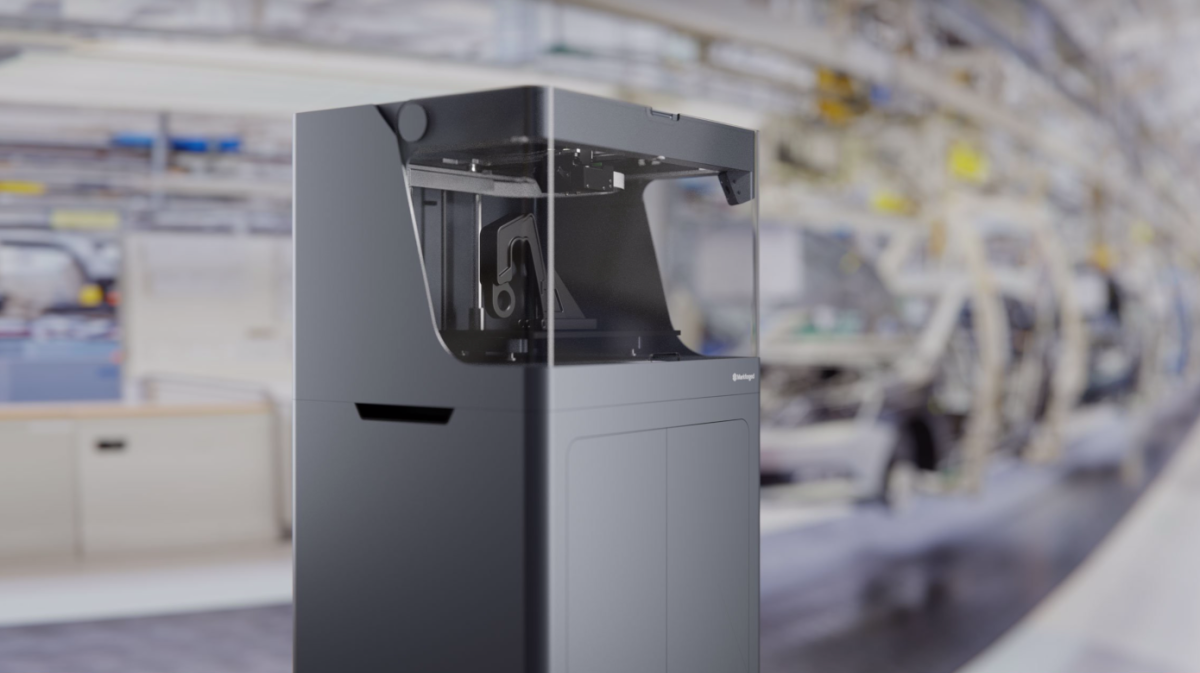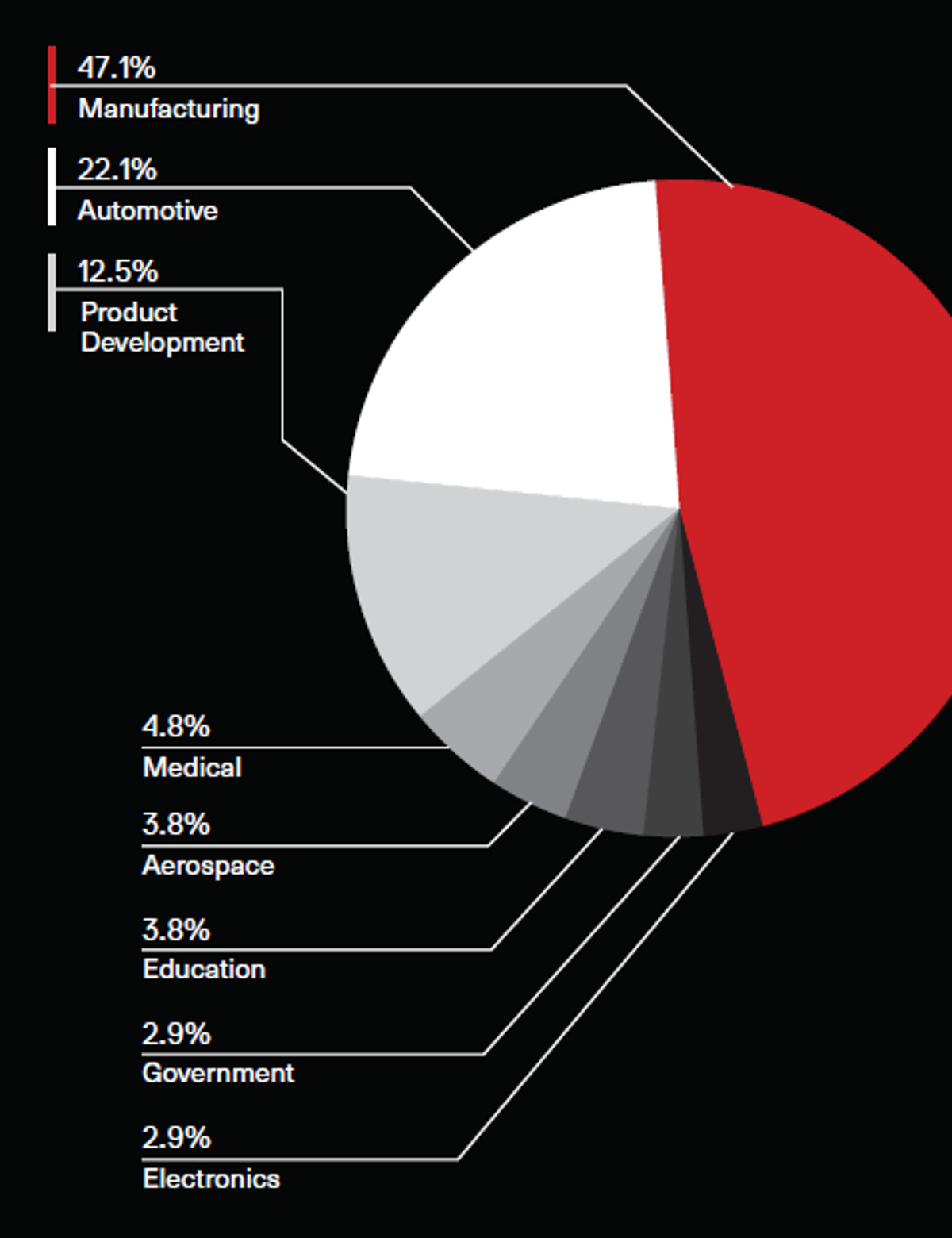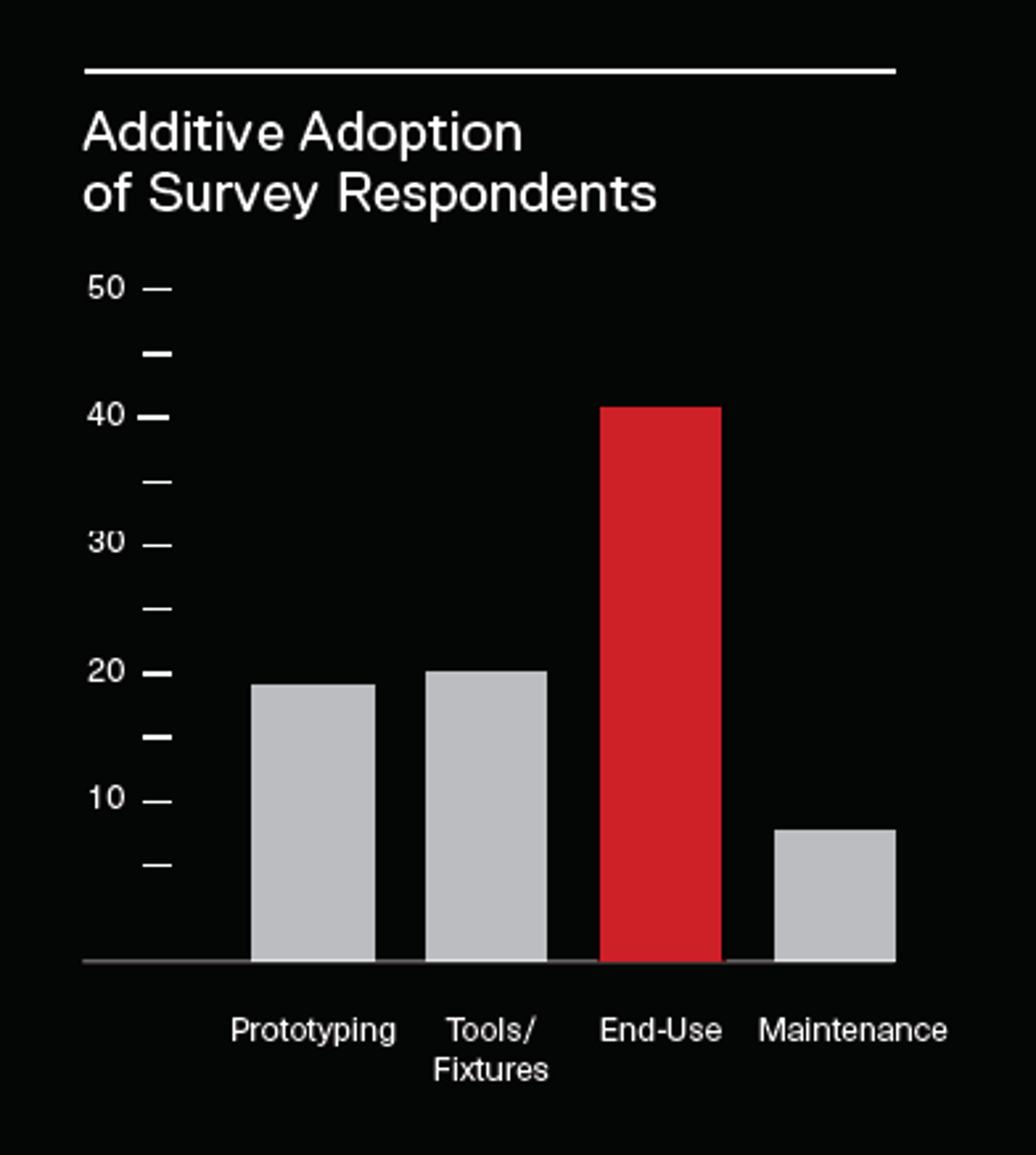Additive Manufacturing Today

Public perception of additive manufacturing has been skewed for years. Industry monoliths have been obsessed over futuristic, vanity applications instead of practical use cases. But they’ve had it wrong. Today, industrial 3D printing solutions are already transforming supply chains and manufacturers around the world.
Industry experts have long predicted the advent of an "Additive Manufacturing Revolution". But the way they pitch it, 3D printing is as practical as flying cars. These experts may have to wait another decade for their unit economics and throughput capacity of 3D printing to make mass production and mass customization financially and physically viable. Moreover, many of the industries viewed by experts as “ripe for disruption” lack the business processes required to commercialize additive for mass production except for a handful of edge cases where more qualitative intangibles took priority over return on investment (ROI).
Against this decades-long backdrop of intense hype, Markforged set out to show how 3D printing is being used for supply chain optimization and manufacturing TODAY. Surveying customers across a broad range of industries, Markforged analysts identified the highest value applications, workstreams, and business processes made possible with current additive technology.

Industries Using Additive Manufacturing Survey
The customers surveyed submitted use cases that shed light on how the technology is actually transforming their businesses. The starting point for most was a predictable blend of tools, fixtures, and prototypes. As engineers and designers began to implement the technology, however, the quality of the parts coupled with the simplicity of theprocess challenged their initial intuition. They found more and more places where printed parts could not only add value, but improve results. Prototypes and check fixtures became one-to-one replacements for machined metal in some of the most demanding engineering applications.
Where did this shift come from? The innovation spark was not printing metal. Additive manufacturing solutions have been capable of printing stainless steel and highperformance alloys for decades. The answer also doesn’t lie in simplicity alone — desktop 3D printers give students and hobbyists with little-to-no prior expertise the ability to create any shape they can imagine.
The major breakthrough for manufacturers stemmed from accessible processes for producing parts that could hold up to the most demanding engineering challenges. This paradigm shift gave rise to a new way of thinking about not just 3D printing, but manufacturing as a whole.

Additive Adoption of Survey Respondents
The immediacy and repeatability of a cloud-based, end-toend platform further extended the advantage, impacting every stage of the product development cycle. This innovation led to superior usability, which in turn, has spurred the industry to take a bolder approach to product development. As shown in the graph on the next page, 79% of the parts submitted in the customer survey were replacing either metal or composite fiber originals with 3D printed parts. The companies that adopted the technology and the mindset enjoyed higher-performing end products, superior customer experiences, greater market share, and entirely new and profitable business processes.
A 2019 report by EY found that an early majority of 46% of companies expect to use additive manufacturing for end-use parts by 2022. While end-use part production does not paint a comprehensive picture of maturity with additive, it does serve as a proxy for how the survey respondents compare with the industry.
By contrast, the early majority has already arrived at end-use parts for Markforged users. But this does not represent the whole story. A deeper look at how additive is transforming each phase of the product development cycle reveals maturity isn’t just about printing end-use parts, but rather finding the components of the product development cycle most impacted by simple and robust part creation.
As additive manufacturing moves into mainstream adoption, its technologies are already delivering significant value today. Markforged solutions offer manufacturers unprecedented freedom in producing metal and composite parts with engineering-grade precision and durability. And with cloud-based 3D printing software, manufacturers can easily make any part, any time, anywhere on-demand.
After reviewing the exhaustive survey of 100+ additive use cases, Markforged analysts have found that these solutions are reliant on a platform built on four pillars: accessibility, design freedom, physical strength and durability, and reliability. These attributes combine to offer demonstrably improved workstreams relative to traditional manufacturing processes.
If you’d like to see the full list of applications we surveyed, you can visit: markforged.com/additive-manufacturing-movement.
